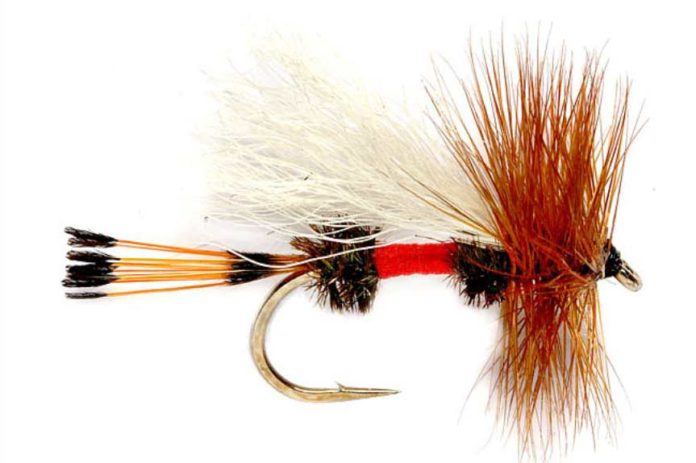Whenever I fish with Tom Rosenbauer, he makes fun of my love for classic fly patterns because he believes that modern tiers have improved on most of these old flies. When we were rigging up to fish a mountain brook-trout stream last Friday, Tom was going with his usual–a Chubby Chernobyl and a beadhead nymph–and he snickered at my choice of a Royal Trude as a top pattern on a two-dry rig that also featured a Skilton Quick Sight Ant as a dropper. But as much as I respect Tom, I love using Trudes, especially on freestone streams.
Most websites attribute the Royal Trude to Carter H. Harrison, who served as mayor of Chicago from 1879-1887 and again in 1893. Here’s the basic story, as told by Fly Fishers International(PDF):
According to many sources, the first of the truly Western flies originated as a lark. Apparently the one-time mayor of Chicago, Mr. Carter Harrison, tied a joke fly on a muskie hook, with a dog hair wing (apparently the first hair wing) and wool from a cabin rug. He presented this fly to Mr. A.S. Trude, owner of ranch Harrison was visiting in Big Springs, Idaho. To make the joke complete, he even named the fly after Mr. Trude. However, this prank fly looked so good it was imitated with slightly different material and became a truly Western fly, totally different from anything back East.
According to several other sites, this happened “in the early 1900s,” 1903, or 1906. The problem with these version is that Mr. Carter was assassinated by disgruntled campaign supporter in 1893, which makes me question the whole story, which seems a little too good to be true.

Regardless, the Royal Trude is far and away my favorite mountain-brookie pattern for several reasons:
- it imitates a wide variety of bug life, from terrestrials, to stoneflies, to caddisflies,
- it floats very well in rough water,
- the white wing is very visible in sunlight and shadow, which makes it a great indicator fly, as well,
- you can strip it under the water at the end of a drift like a wet fly, and
- It catches lots of fish.
So the next time you’re looking for an attractor pattern for a freestone stream–as a main fly, the “sighter” for a small fly, or as an indicator fly–think about this classic dry fly. It’s stuck around for this long for one simple reason: It works. (I also like the Lime Trude.)
Credit: Source link





























